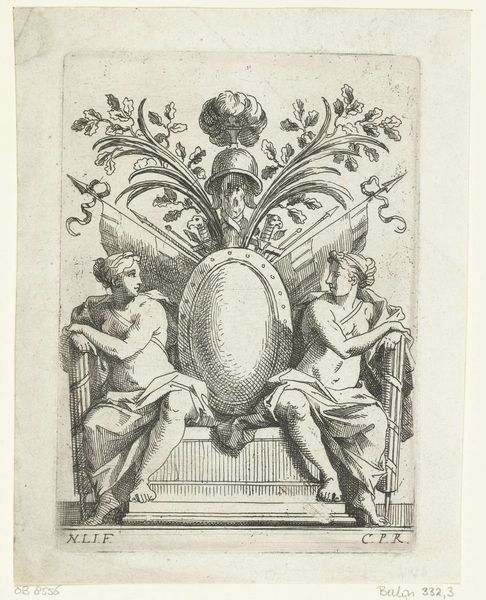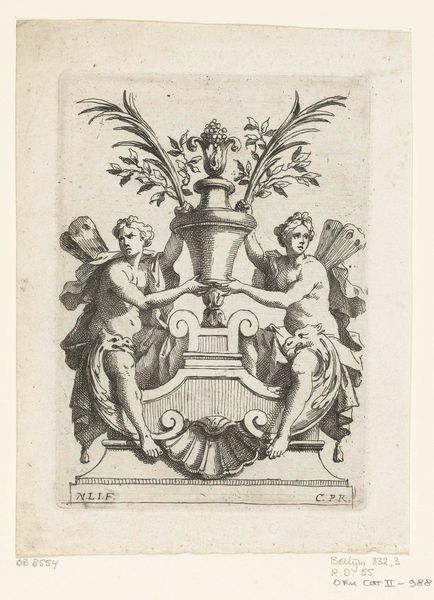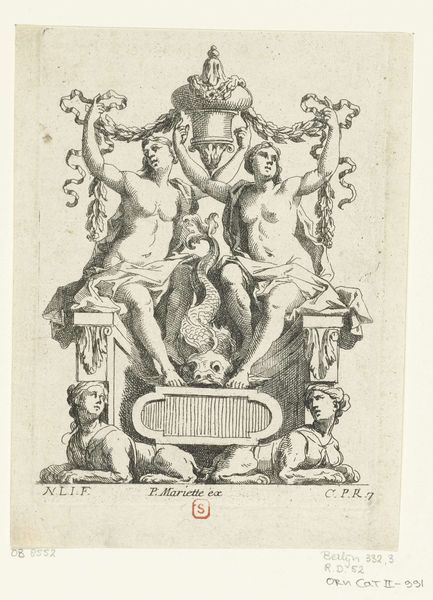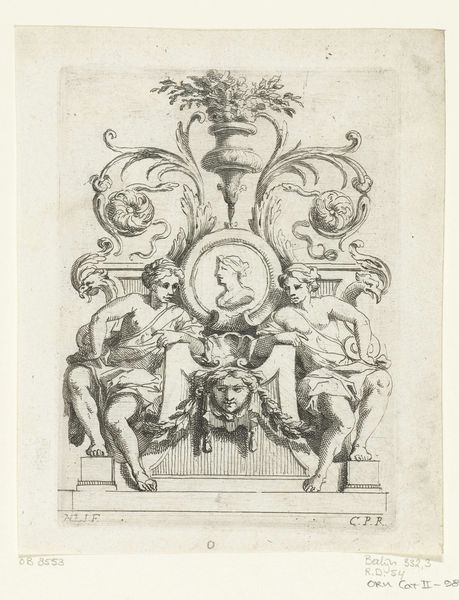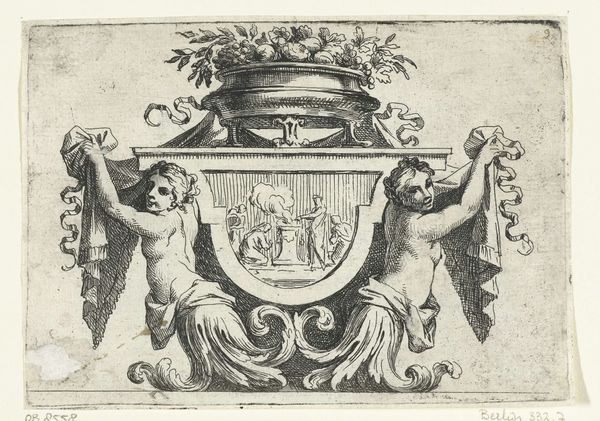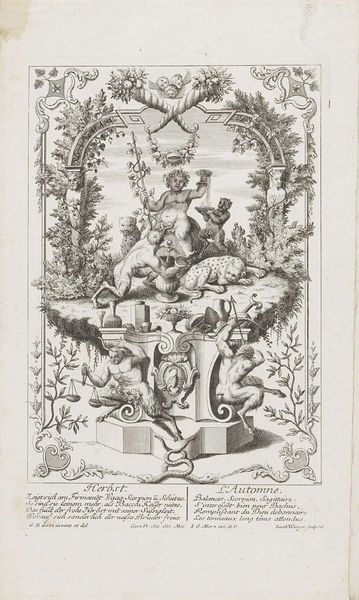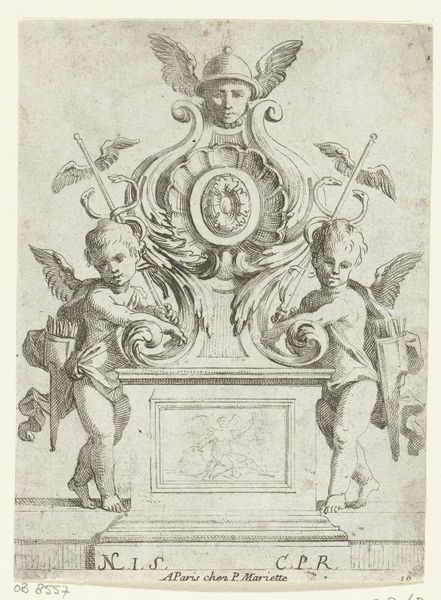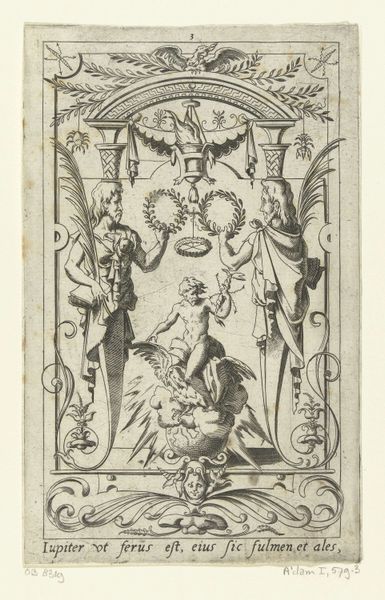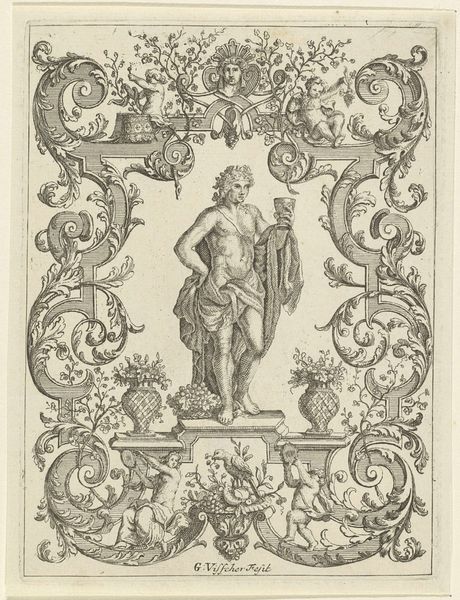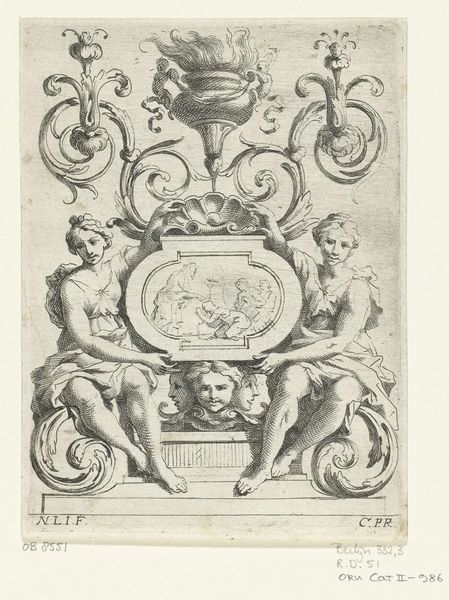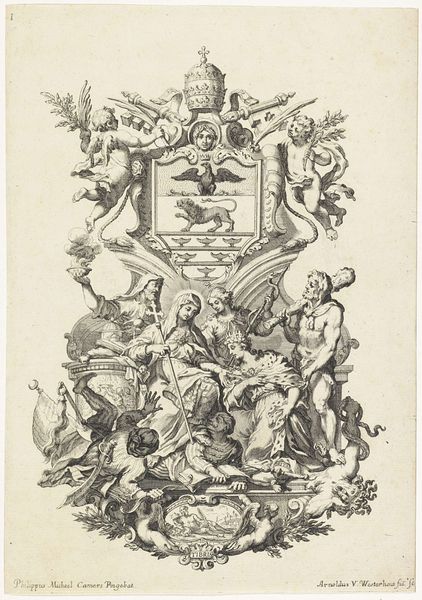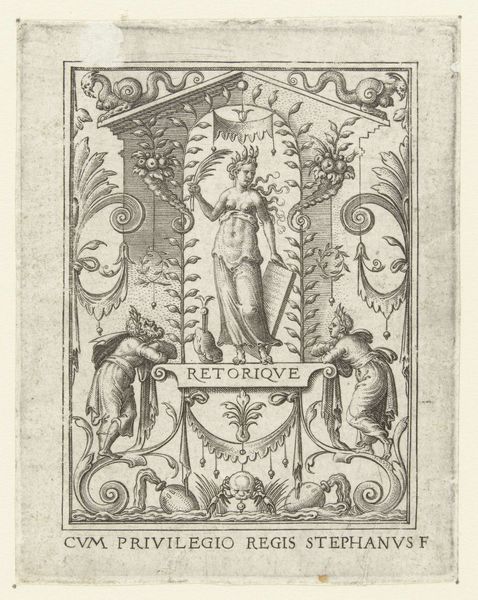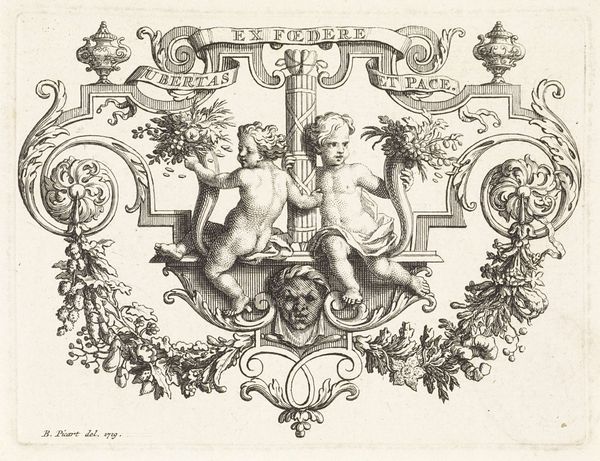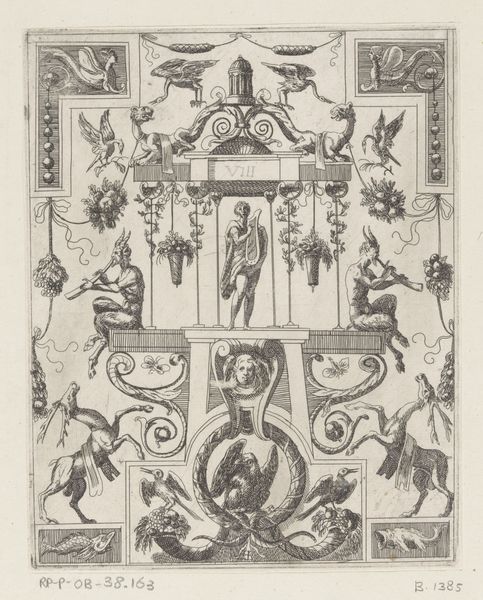
print, intaglio, paper, engraving
#
allegory
#
baroque
# print
#
intaglio
#
figuration
#
paper
#
line
#
engraving
Dimensions: height 157 mm, width 114 mm
Copyright: Rijks Museum: Open Domain
Editor: Here we have Nicolas Pierre Loir’s "Two Winged Women with Medallion," a print from about 1660 to 1670, residing in the Rijksmuseum. The line work is incredibly detailed. What aspects of its creation and historical moment strike you? Curator: I see an exquisite example of intaglio engraving, forcing us to consider the socio-economic implications of printmaking in the Baroque era. This wasn't merely aesthetic expression. It was a commodified object produced through specific labour. What impact did printmaking have on circulating ideas at the time, in your opinion? Editor: Well, the wide distribution, the relatively affordable cost of prints would allow new visual concepts to enter middle class markets like never before, but in what ways does that change our perception of a print like this? Curator: Exactly. Think of the engraver as a skilled artisan embedded within a system of workshops and patronage. Each line meticulously carved becomes a record of human labor and material transformation. The paper, ink, and press used contribute meaning just as much as the subject matter. How does understanding its materiality influence your reading of the allegorical figures? Editor: It casts a new light. I'm more conscious of how the print transforms allegory into a reproducible idea, and how its distribution informs a material culture, if that makes sense. Thank you for emphasizing the economic context, that has broadened my awareness. Curator: And recognizing how its existence intertwines material conditions with symbolic meaning offers valuable perspectives. Thanks!
Comments
No comments
Be the first to comment and join the conversation on the ultimate creative platform.
